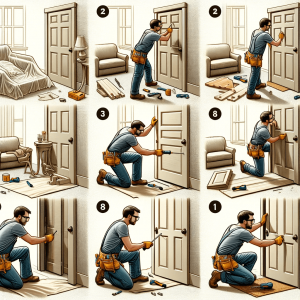Two-panel interior doors come in various configurations to suit different architectural and design needs. The primary configurations for two-panel interior doors include:
Single Door:
A single two-panel door is a standard configuration used for most interior door openings. It consists of a single door leaf with two panels, usually hinged on one side to swing open or in some cases, they can be sliding doors.
Double Doors:
Double doors are a popular choice for larger openings or spaces where a wider entryway is desired. Two individual two-panel doors are installed side by side, and they can be designed to swing open in opposite directions or both open in the same direction.
Bypass Doors:
Bypass doors, also known as sliding doors, consist of two two-panel door leaves mounted on a track. These doors slide past each other when opened and are commonly used for closets or spaces with limited floor space.
French Doors:
French doors are a variation of double doors, featuring two individual two-panel doors that are usually hinged and can swing open in opposite directions. They are often used to connect interior rooms or provide access to patios and outdoor spaces, adding a touch of elegance to the design.
Pocket Doors:
Pocket doors are a space-saving option where two-panel doors slide into a concealed wall pocket when open. This configuration is ideal for areas where space is at a premium, and you want to maximize the usable floor space.
Bifold Doors
Bifold doors consist of two-panel door leaves that are hinged in the center and fold open, creating an accordion-like effect. These doors are often used for closets, pantries, or room dividers.
Pivot Doors:
Pivot doors are a unique configuration where the two-panel door pivots on a central point rather than swinging on hinges. This design can create a dramatic and modern look in interior spaces.
Dutch Doors:
Dutch doors are divided horizontally, with the upper and lower halves functioning independently. In this configuration, each half may have a two-panel design. Dutch doors are often used in kitchens and entryways, allowing for ventilation and communication without fully opening the door.
Saloon Doors:
Saloon doors, also known as cafe doors or swinging doors, consist of two-panel doors that are hinged at the top and swing in both directions. They are often seen in restaurants, bars, and kitchens.
The choice of configuration depends on the specific requirements of the space, the desired functionality, and the overall design aesthetic. Each configuration offers its own advantages and can enhance the style and functionality of your interior spaces.


